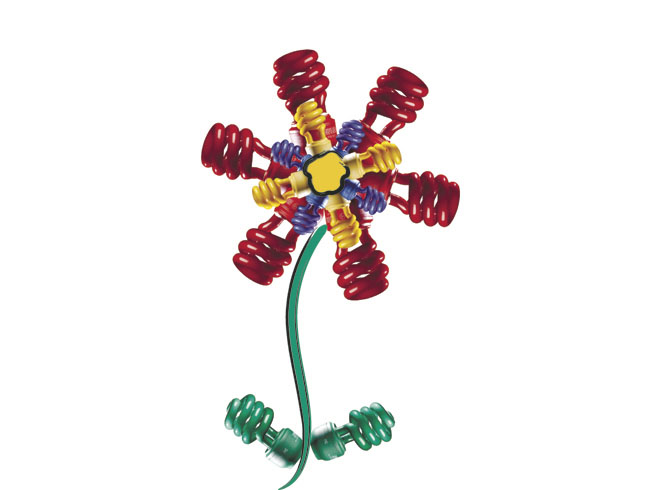PHASING OUT INEFFICIENT LIGHTPresident George W. Bush signed the Energy Independence and Security Act in 2007. Part of the act requires that, between 2012 and 2014, all light bulbs gradually use 30 percent less energy than today's bulbs based on wattage. By January 2020, bulbs must be at least 70 percent more efficient. Compact fluorescent lamps already meet the 70 percent efficiency standards.Source: U.S. Department of EnergyENERGY EFFICIENCYLight bulbs account for less than 10 percent of the average home's electric bill. Here are some tips to save more:* Weather-strip around doors and windows to keep warm air in during the winter and cool air in during the summer* Install a programmable thermostat to keep heating and cooling to a minimum when out of the house* Cook with the microwave more than the stove - it uses less energy* Regularly change air filters* Keep the water heater thermostat low* Let dishes air dry rather than dry with a dishwasher.Source: Electric Power Board
New light bulb standards set to take effect next year should make America's energy consumption lighter, but some complain the green initiative isn't such a bright idea.
The federal regulation will likely reduce the average home's lighting costs by about 79 percent, according to EPB spokeswoman Lacie Newton. While lighting accounts for less than 10 percent of the average power bill - heating and air conditioning take up more than half - Newton said every bit can help.
According to the U.S. Department of Energy, if each American home used just one approved bulb, the country would save enough energy to light 3 million homes for a year, save about $600 million in annual energy costs and annually prevent the emission of greenhouse gases equivalent to about 800,000 cars.
But those energy savings aren't enough to persuade some to throw out the familiar incandescent bulbs for the compact fluorescent ones that are 70 percent more energy efficient, eight to 15 times longer-lasting and also meet federal regulations.
And their curlicue design turns off a lot of people.
"We've had a lot of people who can't stand these," said Chip Conerly, head of the electric department at the Commons Boulevard Home Depot. "A lot of people think they're really ugly."
Conerly said he'd heard several complaints about fluorescent bulbs taking too much time to warm up, then giving off a too-intense glow when they do. New bulbs are regularly being released to address those problems, he said.
Steve Powell, owner of Chattanooga lighting retailer Let Us Light Your World, has heard complaints about fluorescents in his shop, but said he's used them in his home for a year and thinks others will quickly adapt.
"It's something we're not used to," he said. "It's new to use. We're all creatures of habit."
An alternative - LED bulbs - turn on instantly but draw similar complaints about light intensity.
Though the bulbs are supposed to last 10 years, the LED price tag is another sticking point. Home Depot sells an LED bulb for about $15 compared to between $5 and $8 for a four-pack of fluorescents and $3.50 for a six-pack of incandescents.
Incandescents last between 750 to 1,000 hours, while fluorescents run about 10,000 hours.
Today, about 22 percent of his bulb sales are fluorescents and 3 percent are LEDs, Conerly said. Those numbers will probably shoot up when incandescent producers either stop making bulbs or find more energy-efficient - and likely more expensive - ways for people to use incandescent lights.
"I figure by 2012 there's going to be an all-out war between LEDs and [fluorescents]," he said.
Powell said fluorescents are an early favorite.
"I don't see LEDs really taking off," he said. "The fluorescents are more popular and doing a good job, really."
As the technology develops, issues with turn-on time and glow intensity can go away. Powell said his biggest concern is that the toxic mercury contained in fluorescents will contaminate homes through bulb breaks and through improper disposal at landfills.
"Everyone is concerned about the mercury content," he said. "You take all the bulbs that are thrown out in the country and put them in a landfill, that's going to get in the water table."
Exposure to enough of the mercury found in fluorescents over a long enough period can cause symptoms such as tremors, mood swings, insomnia and life-threatening kidney damage.
The Tennessee Valley Authority recommends recycling fluorescents at stores such as Home Depot and Lowe's.
If a fluorescent bulb does break, TVA recommends leaving the room for 15 minutes to let mercury vapor air out, sealing all the broken fragments in a plastic bag, then sealing that bag in another to take to a recycling center.
Still, others say health, environment and light quality are all moot points. The real issue is the federal regulation itself.
"It's a matter of freedom. It has nothing to do with economics, it has nothing to do with the environment, but it has everything to do with control," said Chattanooga Tea Party spokesman and former light fixture manufacturer Gregg Juster. "To save energy? Great idea. To make us save energy? Bad idea."
Juster said he's used fluorescents for decades and thinks they're a great way to save energy and money, but the government should leave people the option to use whatever light source they want.
"You're stupid if you don't use a fluorescent bulb when you can use it, but it's not my choice," he said. "It's their choice."

